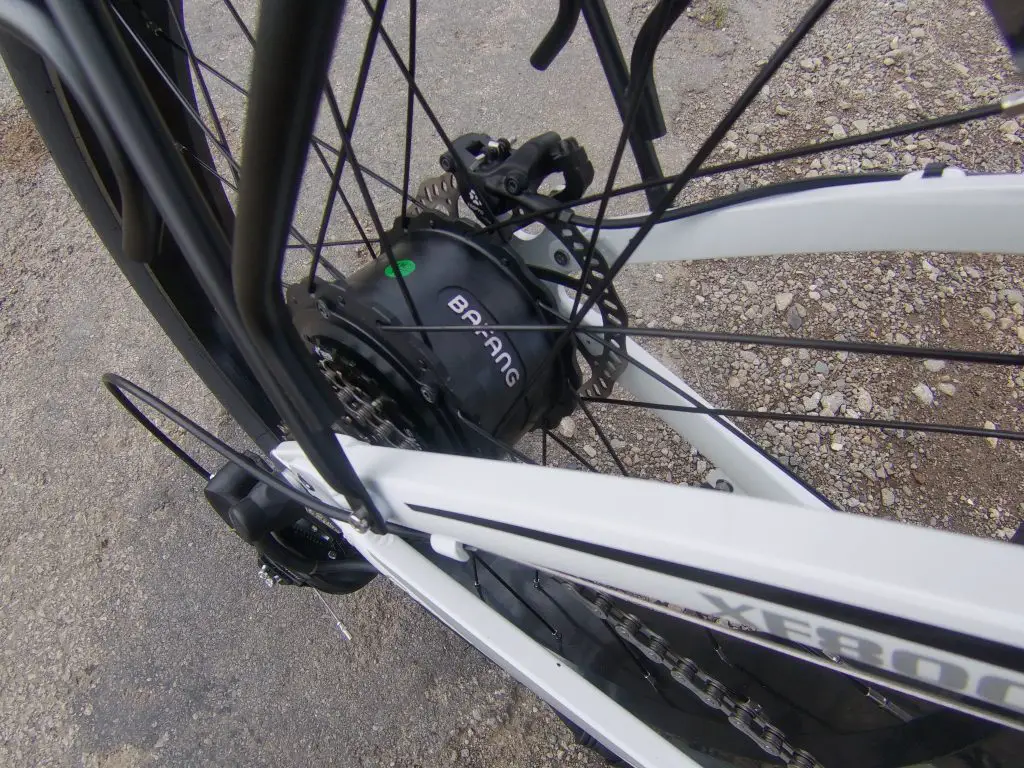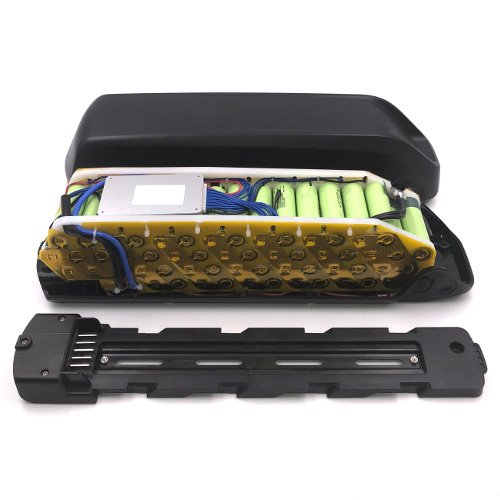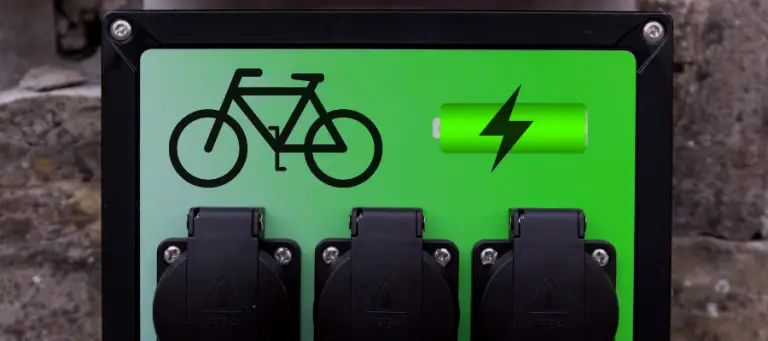When you purchase through links on our website, we may earn a commission. Affiliate disclosure.
As electric bikes continue to grow in popularity, potential buyers are faced with a crucial decision: choosing between a hub motor vs a mid-drive motor. This decision is relevant whether you are buying a new e-bike or converting a bike you already own with a DIY conversion kit.
Both types of motors have advantages and disadvantages, making the choice far from straightforward. In this article, we’ll take a closer look at the different characteristics of hub and mid-drive motors, look at the pros and cons, and help you decide which option is suitable for you.
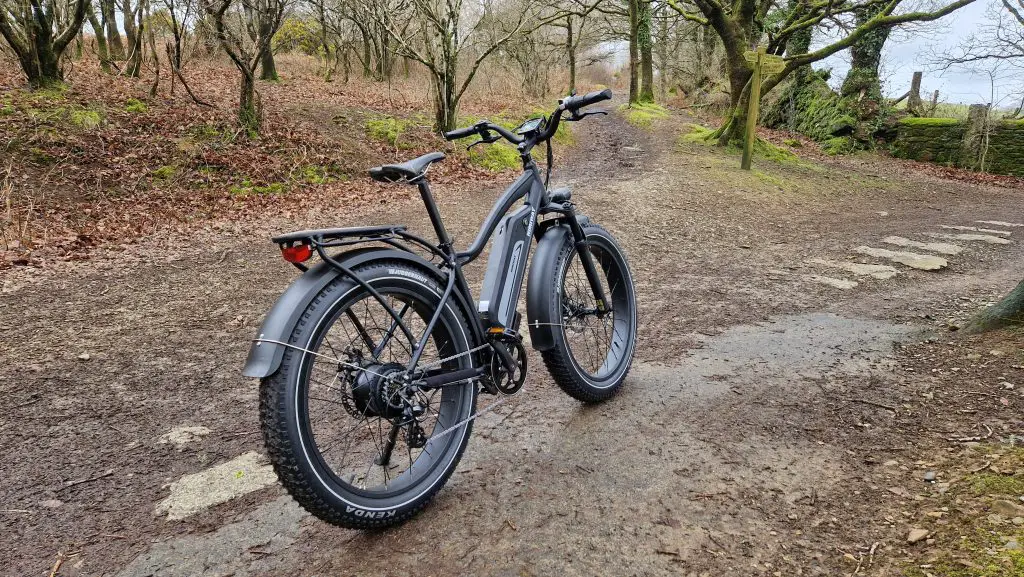
Understanding electric bike motors
Before diving into the comparison, it’s essential to have a basic understanding of electric bike motors. These motors are the driving force behind e-bikes, providing power assistance to the rider, making pedalling easier, and enhancing overall performance.
There are two primary categories of e-bike motors:
- Hub Motors: Located in the centre of either the front or rear wheel, hub motors directly power the wheel they’re attached to.
- Mid-Drive Motors: Positioned at the bike’s bottom bracket (where the pedals and crankset are located), mid-drive motors send power to the rear wheel via the bike’s chain, providing extra drive to the rear wheel.
Now that we have a general understanding of e-bike motors let’s dive deeper into the differences between hub and mid-drive motors.
Hub motor: pros and cons
Hub motors have been around for longer than most people realise. The first electric hub motor was invented by Frenchman Charles Theryc and patented in 1896. Today, they are widely used in electric bikes ranging from budget options to premium models. Below we’ve listed some of their most notable advantages and disadvantages:
Pros of hub motor
- Simplicity: Hub motors are straightforward in design requiring fewer moving parts, making them lightweight and easy to maintain. Their self-contained nature reduces the chances of mechanical complications, such as chain-related issues.
- Cost: Generally speaking, hub motors are less expensive than their mid-drive counterparts. Their relatively simple construction with fewer internal components often results in a lower overall price, making them a popular option on budget e-bikes. They are often cheaper and easier to repair than mid-drives.
- Stealth and Quiet Operation: Due to their location, hub motors are often more discreet than mid-drive motors. They also tend to operate more quietly, allowing for a less noisy riding experience.
- Efficient on Flat Terrain: Hub motors perform well on flat surfaces, providing a smooth, consistent power output. They’re an excellent choice for casual riders and commuters who primarily travel on flat routes.

Cons of hub motors
- Less Torque and Hill Climbing Ability: Hub motors generally provide less torque than mid-drive motors, resulting in diminished hill-climbing ability. Riders who frequently encounter steep inclines may find hub motors less capable of providing adequate assistance.
- Weight Distribution: Hub motors add weight to either the front or rear wheel, depending on their placement. This uneven weight distribution can negatively impact handling and overall ride quality. In addition, the extra weight of the wheel can make them more susceptible to broken spokes.
- Less Efficient on Varied Terrain: Hub motors tend to be less efficient when riding on uneven terrain or in changing conditions. As a result, they may not be the best option for riders who regularly ride off-road trails.
Mid-drive motor: pros and cons
Mid-drive motors have gained popularity in recent years, thanks to their strong performance, high torque output and efficiency. Below, we’ll explore their most significant advantages and disadvantages:
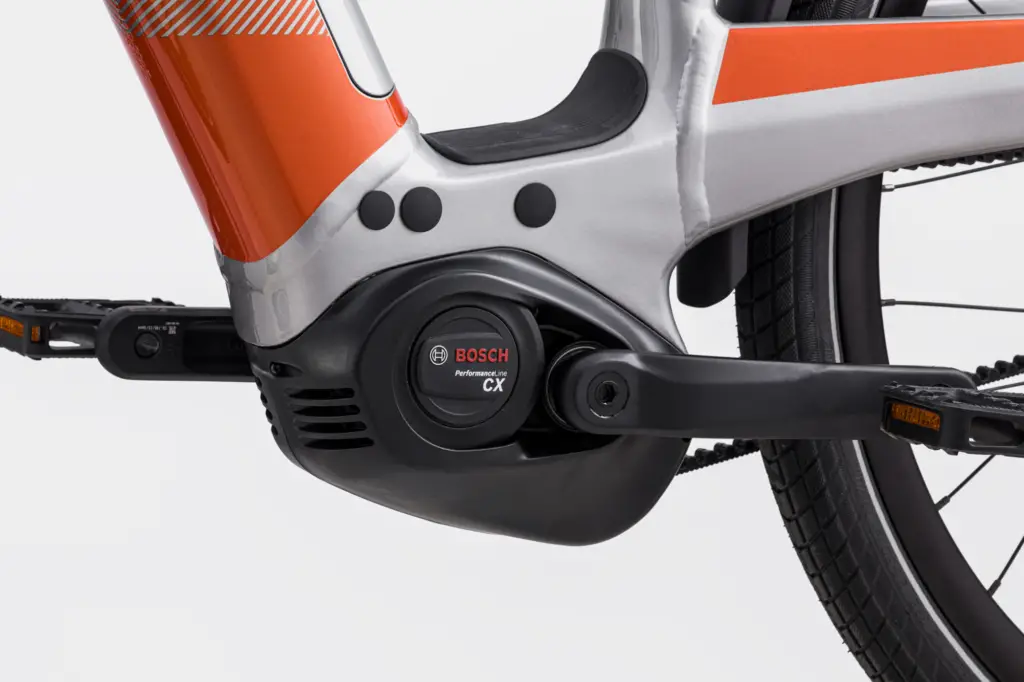
Pros of mid-drive motors
- Torque and Hill Climbing Ability: Mid-drive motors are known for their impressive torque output, making them well-suited for tackling steep hills and off-road terrain. They excel in providing power assistance when it’s needed most, making them an attractive option for riders who frequently face challenging inclines or off-road trails.
- Weight Distribution: Because mid-drive motors are positioned at the bike’s bottom bracket, they help maintain a more balanced weight distribution. This even distribution of weight can improve handling and overall ride quality, particularly during cornering and manoeuvring.
- Efficiency: Mid-drive motors take advantage of the bike’s existing gears, allowing riders to optimize their power output based on the terrain and riding conditions. This feature can result in more efficient power usage and longer battery life, especially when faced with varied terrain.
- Maintenance and Compatibility: Since mid-drive motors don’t directly affect the wheels, they’re compatible with a wider range of wheel types and sizes. Additionally, maintenance tasks, such as changing a flat tire or servicing the brakes, are typically easier with a mid-drive motor setup.
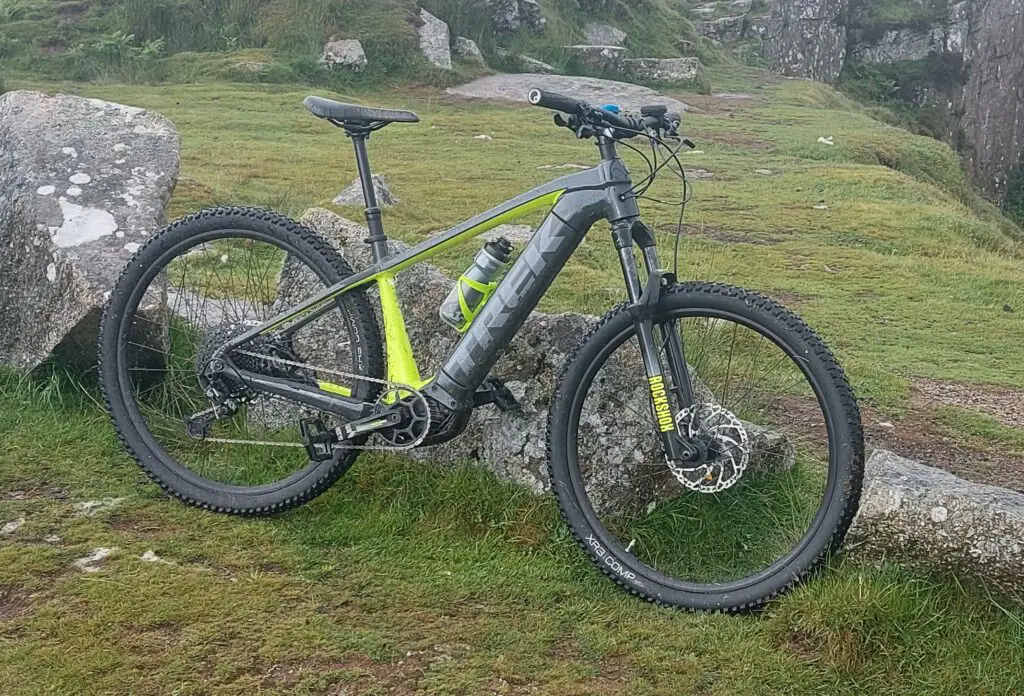
Cons of mid-drive motors
- Cost: Mid-drive motors tend to be more expensive than their hub motor counterparts. Their more complex construction, higher torque output, and overall performance often come at a premium, making them a less budget-friendly option. In addition, they’re more expensive to fix if they do go wrong outside of warranty.
- Increased Wear on Drivetrain Components: The added torque and power provided by mid-drive motors can lead to increased wear on drivetrain components, such as the chain, cassette, and derailleur. This wear may result in more frequent maintenance and replacement of these components.
- More Complex Installation and Maintenance: If you’re converting a bike to electric using a mid-drive motor like the Bafang BBS02B, Installing and maintaining it can be more complicated than a hub motor due to its integration with the bike’s gears and other components. This complexity may require more technical knowledge and expertise.
Hub motor vs mid-Drive: which is best?
There is no easy answer to this question, it depends on the rider’s individual needs, riding preferences, and budget. Below, we’ll summarise the main key factors to consider when choosing between a hub and mid-drive motor:
- Budget: If you’re on a limited budget, a hub motor is nearly always the more affordable option. However, it’s essential to weigh the cost savings against the performance and efficiency advantages offered by mid-drive motors.
- Terrain and Riding Conditions: If you primarily ride on flat terrain and don’t require significant hill-climbing assistance, a hub motor may be a suitable choice. However, if you frequently encounter steep inclines or off-road trails, a mid-drive motor’s superior torque and efficiency may be worth the investment.
- Maintenance and Compatibility: If you’re looking for a low-maintenance option, hub motors are generally more reliable and put less of a strain on the bike’s drivetrain than a mid-drive motor.
- Weight Distribution and Handling: For riders who prioritize optimal weight distribution and handling, a mid-drive motor is the preferred option. However, if these factors are not as important to you, a hub motor can still provide a smooth and enjoyable ride.

Ultimately, the decision between a hub motor and a mid-drive motor comes down to your specific needs, preferences, and budget. Both options have their good and bad points, so it’s important to carefully consider your abilities, the kind of terrain you’ll be riding on, and your ability to maintain the bike before making a decision. By taking the time to consider these factors, you’ll be well on your way to finding the perfect electric bike motor for your needs.


